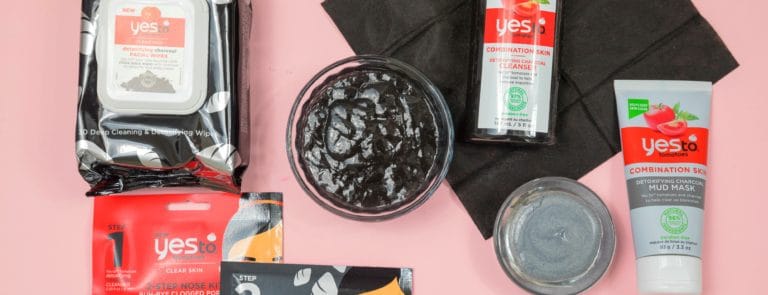15% off €25
Is skin an organ? 9 amazing skin facts

If you have a condition such as acne, eczema, psoriasis or rosacea, learning more about your skin could help you tackle it. Here are 10 skin facts we think you need to know.
In this article, we’ll explore
- What skin is
- 10 interesting skin facts
- How many layers the skin has
- 7 functions of the skin
- How skin protects our bodies
- What skin is made up of
- 9 key skin care facts
What is skin?
Essentially, skin is a large protective shield to keep our bodies safe from heat, light, injury and protection.1
Skin is made up of three layers, the epidermis, dermis and the subcutaneous fat layer (otherwise known as the hypodermis).
Is skin an organ?
Yes! Skin is an organ, and it is in fact the largest organ we have.
10 interesting skin facts
As the body’s largest organ, there are a variety of different facts about skin that are worth knowing about.
Take a look at the top ten interesting skin facts as well as some commonly asked questions about the skin, below.
-
Your skin is a barrier
Made of an outer layer, the epidermis, and a layer of soft tissue beneath that, the dermis, the skin is your body’s largest organ.
It protects your body from the environment, regulates temperature and fights off infections.2
-
A healthy lifestyle helps your skin
A balanced diet, with plenty of fruit, vegetables, whole grains and some lean protein, will be reflected in your complexion.
In addition to this, too much processed sugar, such as fizzy drinks, may also have a negative effect on your skin.3
Avoid too much alcohol, which can dehydrate your skin, cause bloating and puffiness and make it look older.4
And smoking is a big skin sin: strong evidence links it with premature ageing.5
-
Sun safety is essential
UV radiation can damage the DNA in your skin cells, use sunscreen with a minimum SPF every day.
If you had a blistering sunburn before the age of 20, your risk of skin damage may be doubled.6
So monitor your skin for signs such as changes in moles, or new moles, and report them to your doctor.
-
Rosacea affects one in ten
With symptoms including flushing, areas of permanent redness and spots, rosacea usually affects people with fair skin, typically after 30.
Rosacea can be treated with medicine, laser treatment and self-help steps, such as avoiding spicy food, too much sun and stress.7
-
The wrong foods really could cause spots
Although the link between spots and diet used to be considered a myth, there’s now evidence a diet high in dairy8 and high-GI foods may exacerbate acne.
So try switching to dairy-free foods and swapping high-GI foods like white bread and rolls for whole-grain versions.9
-
Eczema is linked to allergies
Some common substances that may cause your skin to react include house dust mites, pet fur and pollen, along with food such as dairy products, eggs and nuts.
Eczema isn’t always caused by allergies, though – cold weather, excess washing and friction from rough fabrics can also trigger it.10
-
Gentle care is better for skin
If you have any skin condition, you should always use mild cleansing products and avoid over-washing.
Harsh cleansing can irritate sensitive skin and trigger over-production of sebum in oily skin.11
-
Low stress equals better skin
Any skin condition can be aggravated by a rise in cortisol, a hormone connected to stress.13
Take steps to reduce it – yoga, mindfulness meditation and hobbies you love can help.
-
Facial expressions can raise your wrinkle risk
No matter how much sunscreen you slather on, if you have an expressive face, you might still get lines earlier than some others.14
The good news? Crow’s feet, the lines typically linked with smiling, aren’t necessarily ageing – in fact, research has found men and women with crow’s feet are considered more attractive and intelligent. So be happy!
How many layers of skin do we have?
As mentioned previously, the skin has three key layers.
These include:
- The epidermis – this is the thin, outer layer of skin that includes three different types of cells. The squamous cells, the basal cells and the melanocytes.
- Dermis – this is the middle layer of the skin that is held together by collagen, that makes the skin flexible and strong. It also contains blood vessels, lymph vessels, hair follicles, sweat glands, collagen bundles, fibroblasts, nerves and sebaceous glands.
- Subcutaneous fat layer (hypodermis) – this is the deepest layer of the skin, which is made up from collagen and fat cells. It helps to keep in the body’s heat and acts as a shock absorber to prevent serious injury.15
Is dust dead skin?
Household dust consists of a variety of not so pretty elements, including; hair, fibres from clothes, dirt, dust mites, parts of dead insects, soil particles, pollen, microscopic pieces of plastic and you guessed it – dead skin cells.16
Apparently, as much as 50% of household dust comes from dead skin cells.17
7 functions of the skin
We’ve gone through the different layers of the skin and what they consist of, but there are another seven key functions of the skin we should all know about:
- The main function of the epidermis, the outer layer of the skin, is to provide a physical and biological barrier to our surroundings, preventing allergens and irritants from getting in.
- Another key function of the skin is the storage of water and fats.
- The regulation of our body temperature, or homeostasis, is an additional function of the skin.
- Our skin also helps us to feel. The nerve endings in the skin allow us to sense temperature, vibration, touch and injury.
- Skin also plays an important role in our immunity, by helping to detect infections.
- An additional function of the skin is its presence in the production of vitamin D.
- The skin also helps to reduce the harmful effects of UV radiation.18,19
How does skin protect the body?
The skin protects the body in a number of different ways. For example, the melanocytes in the epidermis produce more melanin when the skin is exposed to sunlight, which helps to protect against UV damage.20
What’s more, the lymphocytes and langerhans cells grab germs and take them to the nearest lymph node to help keep our immunity.21
In addition to this, the hypodermis which is made from collagen and fat cells, helps to protect our bones and joints from injury by acting as a shock absorber.22
Why is the skin important?
The importance of skin is essentially down to how it covers and protects the body, but also keeps all of our bones, muscles and organs in place.23
What is skin made up of?
Skin is made up of several different elements, which include:
- Water
- Protein
- Lipids (fats)
- Several vitamins and minerals24
9 skin care facts
Read on for 9 of our top skin care facts.
-
Over-cleansing may lead to breakouts
While cleansing your face is great for getting rid of dirt build-up and removing makeup, there is such a thing as over-cleansing.
Washing your face several times in one day for example may cause sensitivity and lead to breakouts.25
-
SPF is the most effective anti-ageing product
One of the biggest contributors to ageing is sun damage. Thankfully though, there is an ultimate anti-ageing product out there to counteract it – SPF!
Scientifically proven to reduce the signs of skin ageing, even in those in their 40’s and 50’s, the importance of wearing SPF every day cannot be understated.26
-
The order of your skincare routine is vital
While you might have all the best skincare products in your cabinet, the order you apply them in is essential for ensuring you actually get any benefits from them.
For example, if you apply a serum after you have moisturised, chances are the serum won’t be able to penetrate the skin as the moisturiser will have formed a barrier.
-
Too much product can be ineffective
Being too generous with your products can sometimes lead to ‘pilling’, which is where the product hasn’t been absorbed properly and is simply rubbing back and forth on your skin or forming little balls.27
-
Pores aren’t sensitive to temperature
You might have heard the myth that hot water opens up pores, however, this is not the case. According to Dr Anjali Mahto, a consultant dermatologist at Cadogan Clinic, instead, the hot water causes the pores to swell and appear open – rather than actually opening up.28
-
You can start using ‘anti-ageing’ products from your mid-twenties
While retinol and retinoids are strong products, they can be preventative for fine lines and signs of ageing – so it’s worth slowly adding it into your skincare regime from your mid-twenties.29
-
You can use different products in the AM to the PM
During the day, our skin goes into ‘protect’ mode, so it’s important that we use products that offer protection against free radicals and sun damage in the morning.
Whereas at night, our skin is no longer defending itself, so more regenerative and restorative products can be used to a greater effect.30
-
Cleansing wipes can be bad for your skin
Although they’re very convenient and time saving, unfortunately, cleansing wipes aren’t the best for cleaning your face.
This is because they smear dirt and old makeup across your face without effectively removing it.
And rubbing at the skin around your eyes with a makeup wipe can damage its delicacy and potentially cause premature ageing.31
-
Chemical exfoliants are better than facial scrubs
Harsh physical exfoliating scrubs can actually damage the skin rather than help it.
This is because it can lead to over-drying and broken capillaries (blood vessels) and even cause millia which are small hard whiteheads.
The final say
And there we have it. The skin plays such a vital role in our bodies, and we can often take it for granted.
However with our skin and skincare facts, hopefully, you can continue to treat your skin with the respect it deserves.
Last updated: 9 March 2022
- https://www.stanfordchildrens.org/en/topic/default?id=anatomy-of-the-skin-85-P01336
- https://www.stanfordchildrens.org/en/topic/default?id=anatomy-of-the-skin-85-P01336
- https://academic.oup.com/ajcn/article/94/2/479/4597872
- https://www.drinkaware.co.uk/facts/health-effects-of-alcohol/appearance/how-alcohol-affects-your-appearance
- https://pubmed.ncbi.nlm.nih.gov/31531169/
- https://www.aad.org/media/stats-skin-cancer
- https://www.nhs.uk/conditions/rosacea/
- https://pubmed.ncbi.nlm.nih.gov/15692464/
- https://www.researchgate.net/publication/285298557_Acne_improves_with_a_popular_low_glycemic_diet_from_South_Beach
- https://www.nhs.uk/conditions/atopic-eczema/
- https://www.ncbi.nlm.nih.gov/pmc/articles/PMC3088928/
- https://www.ouh.nhs.uk/patient-guide/leaflets/files/121204psoriasis.pdf
- https://www.ncbi.nlm.nih.gov/pmc/articles/PMC4082169/
- https://pubmed.ncbi.nlm.nih.gov/22092807/
- https://www.stanfordchildrens.org/en/topic/default?id=anatomy-of-the-skin-85-P01336
- https://cen.acs.org/articles/95/i7/Tracing-chemistry-household-dust.html
- https://www.worldcat.org/title/house-dust-biology-for-allergists-acarologists-and-mycologists/oclc/9757081
- https://cdn.ps.emap.com/wp-content/uploads/sites/3/2019/11/191127-Skin-1-the-structure-and-functions-of-the-skin.pdf
- https://www.hse.gov.uk/skin/professional/causes/structure.htm
- https://www.ncbi.nlm.nih.gov/books/NBK279255/
- https://www.ncbi.nlm.nih.gov/books/NBK279255/
- https://www.ncbi.nlm.nih.gov/books/NBK279255/
- https://kidshealth.org/en/kids/skin.html
- https://my.clevelandclinic.org/health/articles/10978-skin
- https://www.aad.org/public/diseases/acne/skin-care/habits-stop
- https://www.scripps.org/news_items/4532-how-to-slow-down-your-skin-s-aging
- https://drsambunting.com/blogs/sam-bunting/what-is-skincare-makeup-pilling
- https://www.goodhousekeeping.com/uk/beauty/skincare/a570937/skin-care-facts/
- https://skintreatment.com/a/info/blog/change-how-you-age-anti-aging-top-10-for-your-20s
- https://www.goodhousekeeping.com/uk/beauty/skincare/a570937/skin-care-facts/
- https://www.saveface.co.uk/know-skin-care-facts-skin-care-fiction/
- https://www.saveface.co.uk/know-skin-care-facts-skin-care-fiction/




